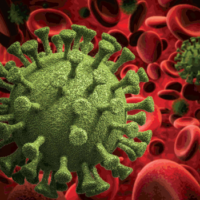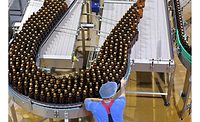Coronavirus disease (COVID-19) took center stage seemingly overnight. Businesses and institutions of all types scrambled to react to the rapidly changing dynamics of SARS-CoV-2, the virus that causes COVID-19. Add in presidential executive orders, state shelter-in-place orders, and even some local ordinances, and the best one could do was to react and respond to this ever-changing crisis.
Today, we are moving from reaction to proactive planning to mitigate and manage risk in workplaces and communities. We are entering the “new normal.”
This new normal is still challenging to predict. It is revealing parallels to food safety hazard control principles as evidenced by the need to identify and implement COVID-19 control strategies and evolve a COVID-19 culture.
COVID Control Strategies
Government agencies have laid out a fairly clear set of strategies that are important to minimize the risk of COVID-19 transmission between people in food processing facilities. The challenges are consistent implementation and documentation.
Verification activities should be identified in your plan and documented to prove that you are doing what you said you were going to do in your COVID-19 plan. Here is an example of a social distancing verification check list.
The preventive controls outlined in the Food Safety Modernization Act, coupled with copious guidance from federal agencies, state and local departments of health, and sector-specific associations, pave the way for food companies to develop a COVID-19 control plan. Now that we have a roadmap, how do we get our employees to buckle their seat belts and drive our plans forward?
What Is a COVID-19 Culture?
Organizational culture, as applied to the food industry, is often two-fold. There is the corporate culture—the way management and employees interact, the use of technology, and the level of risk the enterprise is willing to take. Then there is food safety culture, specific to how the company integrates, supports, and resources food safety, and the overall adoption of food safety as everyone’s responsibility.
Significant research conducted in the last decade in food safety culture reveals parallels with creating a strong COVID-19 culture. It is clear that culture draws its power from beliefs and values as fundamental as doing the right thing when no one is watching.
One can also use a maturity model is to assess your current state (where you are now) and identify the desired future state (your desired destination). Maturity models are useful tools to help you navigate the inevitable bumps and detours on your way to ongoing, systematic COVID-19 controls. These models assume a natural progression reflecting human intuition, starting with doubt or complete denial, to reaction, then some level of proactive quest for knowledge, to empowered and predictive behavior, ultimately arriving at a systematic internalization of the desired behaviors and outcomes.
Food companies are encouraged to create a written COVID-19 control plan by identifying the risks and implementing mitigation controls, with procedures for monitoring, verification, corrective actions, and procedures that comply with applicable laws, regulations, and record retention requirements. Assessing your COVID-19 culture and implementing efforts to enhance it using simple strategies or more comprehensive maturity models are useful tips to help support your COVID-19 control program.
For more information on implementing a COVID-19 culture, please visit the full-length article in the next issue of Food Safety Magazine.
Melanie Neumann, J.D., M.Sc., is the principal of Neumann Risk Services and serves as the EVP and General Counsel of Matrix Sciences.
Implementing a COVID-19 Culture in the “New Normal”




